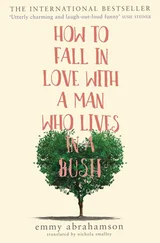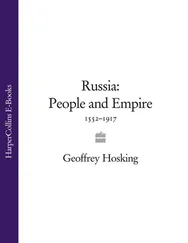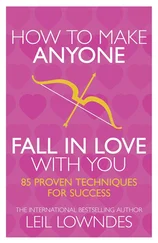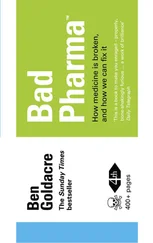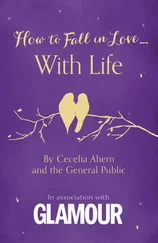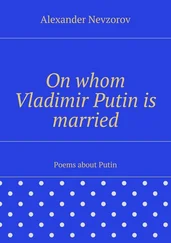The wars that had been fought between Russia and China in the eighteenth century for control of these lands reignited in modern form in the Sino-Soviet split. The border between the Socialist brotherhood of the Soviet Union and the People’s Republic was as militarized as the Iron Curtain in the West. Yet the gulf between the cultures on either side, in terms of understanding, contact and empathy was wider still. What for the Cossacks who settled the region had been the border between Orthodoxy and paganism, stayed a racial, cultural fissure. And unlike the wall through Europe, this was a border people fired across. Incidents occurred in the early 1960s as the ideological empires began to fall out. Border guards would fire sporadically, then halt. At some points on the Chinese side loudspeakers blasting out the propaganda of the Cultural Revolution were installed to scream into Russia.
As tensions rose in the forms of ideological epistles and accusations of ‘revisionism’ so too did the number of incidents, or border shootings, climbing 150 per cent from late 1964 to March 1969. 13It was then that China, having lurched into the convulsions of the Cultural Revolution, resolved to take a tougher stance on clashes with the Soviets. In internal Chinese Communist Party meetings officers of its People’s Liberation Army claimed that the Red Army had been found ‘clandestinely moving the border markers in our direction’. 14Their determination to make them pay for this had escalated into a Chinese ambush at the beginning of March 1969, then into two all-out battles with Soviet forces almost two weeks later. The Soviet side believed, according to one internal report, that during the provocation:
The wounded were shot by the Chinese from close range [and/or] stabbed with bayonets and knives. The faces of some of the casualties were distorted beyond recognition; others had their uniforms and boots taken off by the Chinese. 15
Moscow responded by sending a small force with tanks backed up by an artillery barrage. The USSR claimed it lost 58 troops, Beijing claimed it had killed 239 Soviet troops and taken 60 prisoners, whilst the former director of the CIA claimed that American satellite photos showed that ‘the Chinese side of the river was so pockmarked by Soviet artillery that it looked like a moonscape.’ 16
This began one of the most serious nuclear attack scares of the Cold War. China was whipped into anti-Russian hysteria with the People’s Daily running the editorial ‘Down with the New Tsars’. 17The Chinese politburo debated the possibility of Soviet bombing, with Mao twice warning of the need to prepare for war. In the Chinese provinces in the last quarter of 1969 follow-up on such declarations was visible with air-raid shelters being built, militias organized and command posts set up. Plans were also drawn up to evacuate schools and colleges from the cities. More severe incidents took place on the border of Xinjiang in western China and Soviet Kazakhstan.
The USSR, meanwhile, approached the USA about the possibility of a ‘surgical strike’ with atomic weapons on China’s nuclear force. The USA had approached the USSR several years before about such a possibility. Symmetrically, Washington rebuffed Moscow, like Moscow had rebuffed Washington. In the end there was no war, but a process of rethinking what had happened on the banks of the Amur began in Beijing. This change in attitudes towards Chinese security saw Mao move towards inviting Nixon to China and the state’s eventual opening to the West. The USA proved so receptive to this as Henry Kissinger, then secretary of state, had grasped something essential during the war scare. China could frighten Russia the way America never could. He noted in his memoirs:
No compromise of Chinese boundary claims could alter the fact that sometime in the next generation the disparity between Soviet and Chinese power in Asia would first narrow and then tilt the other way; from then on, Siberia’s future would depend increasingly on Peking’s goodwill, which no Chinese government could ensure for eternity. 18
On the third night, east of Irkutsk, we are closer to Beijing than to Moscow, the noise from the rails is now maddening, and in the gloom-filled corridors of the Trans-Siberian I thought continually about the conversations I have had there. For centuries, a weak China underwrote Russian expansion and Russian security in Asia. A strong China would never have allowed Russia to take this shape. Today, the tables have turned and Russia is now the less-developed state. Even Putin, when visiting the Russian Far East in 2000 warned the locals that unless there was improvement to the economy their children would be speaking Chinese. 19Medvedev in 2008 also warned that unless Russia invested in the region Moscow could ‘lose everything’. 20
Putin himself is extremely interested in improving Russia’s ties with China. Like the Tsar in Sorokin’s Day of the Oprichnik , his daughter studied and speaks Mandarin and he travels frequently to Beijing. Yet friendship is the only option that Russia today really has. Russia may have legally agreed borders with China, but only with ‘this’ China. The Republic of China (Taiwan) doggedly claims Tuva in Russia and all of Mongolia as Chinese lands. This is, of course, not the China that matters – but what China will exist in twenty or fifty years, that might well be much more nationalistic, and which Russia of course has no agreement with whatsoever.
One conversation in Beijing comes back strongly. ‘So what does China think of Russia?’ My question was to the editor of a powerful Chinese foreign policy journal on the steps outside the Chinese Academy of Social Sciences, the party’s most powerful think-tank. The smog is enveloping, a combination of humidity and heat that gives the air the qualities of a solid. The main highways of Beijing resemble triumphal motorways, a grid around the Forbidden City lined by the glassy trophies of our times: five-star hotels, oil majors and banks. The central traffic axis is the work of none other than Albert Speer Jr., the son of Hitler’s chief architect. His plan bears striking resemblance to what his father made only in ‘maquette’ form for the Führer’s post-war Berlin – the magnificence of inhuman verticals.
‘We learnt a lot from Moscow’s mistakes,’ responds the editor. Since 1991, China and Russia have been mutual utopias and dystopias. In the early 1980s the two powers chose different exits from the dead end of bureaucratic pseudo-communism. For Russia, China’s choices came to look like a utopian success of authoritarianism, capitalism and sovereignty, a triumph over the West that Moscow should have followed. For China, Russia came to look like a dystopian blend of lawlessness, corruption and shrunken power: a litany of every mistake a ruling party can make. During the 1990s Chinese academies studied the collapse of the USSR in order to derive policies to strengthen their own Communist Party. Since 2006 a restricted eight-volume DVD set, Consider Danger in Times of Peace , on the Soviet collapse has been mandatory viewing for all central, provincial and municipal party organs. The fall of the USSR has replaced Lenin’s revolution as the world-historical justification for the ‘dictatorship of the proletariat’.
The editor from the Chinese Academy of Social Sciences, along with other members of the Chinese foreign policy establishment, is dismissive of Russia. He sums up his views this way: ‘When we think of Russia we think of Putin, vodka, guns and prostitutes.’ They leave me with the impression they view Russians as second-class whites. In the Chinese Centre for International Affairs, a think-tank closely affiliated with Beijing’s foreign ministry, the specialists are less rude: ‘We think Russia is in love with Europe, but does not know how to express its love… other than violently.’
Читать дальше






